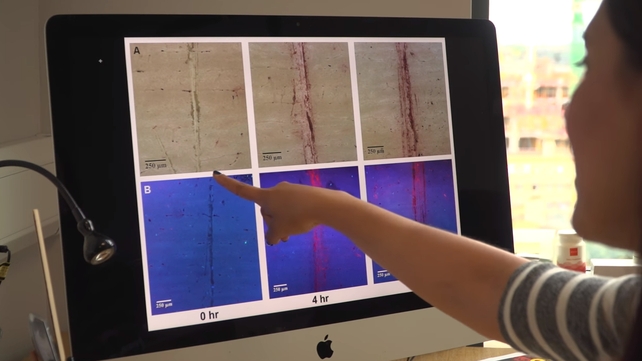The technique, devised by chemists at Trinity College Dublin and the Royal College of Surgeons in Ireland, involves the use of tiny pieces of gold, which have compounds attached to them that are luminescent in certain conditions.
The fragments are attracted to tiny fissures that appear when bones crack, and attach themselves to the area.
Using Magnetic Resonance Imaging (MRI), the researchers can then scan the damaged area which is revealed in a three-dimensional map of the microcracks.
The research, published in the journal Chem, could lead to the development of a method for diagnosing problems with bone strength and other degenerative bone diseases like osteoporosis.

The technique also avoids the use of x-ray imaging, which has been associated with a higher risk of cancer.
"The nano-agent we have developed allows us to visualise the nature and the extent of the damage in a manner that wasn't previously possible," said TCD Professor of Chemistry, Thorri Gunnlaugsson.
"This is a major step forward in our endeavour to develop targeted contrast agents for bone diagnostics for use in clinical applications."
"Current x-ray techniques can tell us about the quantity of bone present but they do not give much information about bone quality," said RCSI Professor of Anatomy Clive Lee, who was also involved.
"By using our new nano-agent to label micro-cracks and detecting them with magnetic resonance imaging, we hope to measure both bone quantity and quality and identify those at greatest risk of fracture and institute appropriate therapy.
"Diagnosing weak bones before they break should therefore reduce the need for operations and implants - prevention is better than cure."
No comments:
Post a Comment